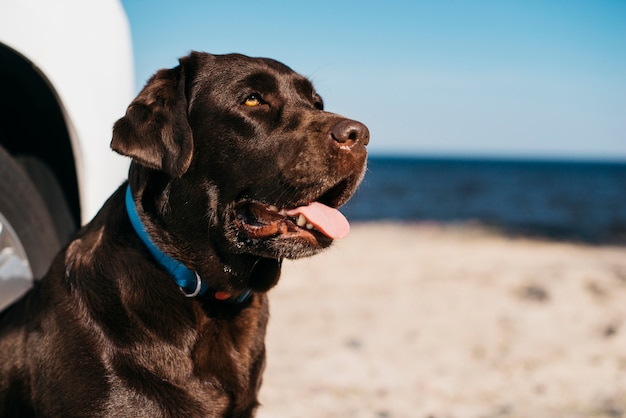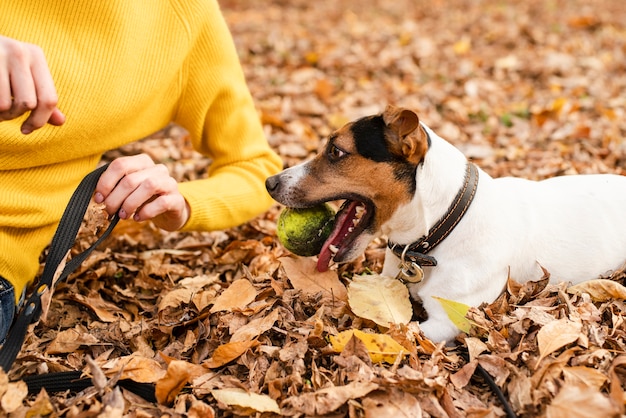Heatstroke in Pets: Warning Signs Every Woodstock Owner Should Know

Heatstroke in Pets: Warning Signs Every Woodstock Owner Should Know
Georgia’s summers bring plenty of sunshine, humidity, and opportunities for outdoor adventures with your pets. However, when temperatures soar, so does the risk of heatstroke in pets—a potentially life-threatening condition that can affect both dogs and cats with frightening speed. At Express Vets Woodstock, located at 1428 Towne Lake Parkway, Suite 105, Woodstock, GA 30189, we know how important it is for local pet owners to recognize the earliest signs of pet overheating and take prompt action. This blog will guide you through the most common symptoms, explain why heatstroke happens, outline what you can do at home, and help you understand when to schedule an appointment with your veterinary team.
As your trusted provider for veterinary services in Woodstock and surrounding communities, we’re dedicated to keeping your pet safe and healthy year-round. Whether you’re planning summer hikes or simply enjoying time in your backyard, understanding the dangers of heatstroke can make all the difference. Read on to discover how you can protect your furry friend during the hottest months, the steps you should take if you suspect heatstroke, and when to reach out to a “vet near me” for help. If your pet is due for a wellness examination or you want to discuss preventive care, our veterinary professionals are always here to support you.
Recognizing the Signs of Heatstroke in Pets
Heatstroke in pets is a medical emergency that can develop quickly, especially in Georgia’s warm, humid climate. Recognizing early symptoms is essential for preventing serious complications. Key signs of pet overheating include excessive panting that goes beyond normal cooling, rapid breathing, drooling that is heavier than usual, and restlessness or signs of discomfort. As heatstroke progresses, pets may develop bright red gums, lethargy, vomiting, diarrhea, or even collapse. In cats, symptoms tend to be subtler, such as open-mouth breathing, drooling, or sudden weakness.
You might notice your dog becoming unsteady on their feet, appearing confused, or showing reluctance to move. Cats may seek out cool surfaces, hide, or seem unusually quiet if they are overheated. Other warning indicators include elevated heart rate, glassy eyes, and in severe cases, seizures or loss of consciousness. It’s important to remember that certain breeds—such as brachycephalic (short-nosed) dogs and overweight pets—are at greater risk and may show signs with only moderate exertion.
If you observe any of these symptoms, especially during hot weather or after exercise, immediate action is crucial. Understanding the early signs of pet overheating can help you intervene before your pet’s condition becomes critical.
Why Does Heatstroke Happen? Risk Factors and Causes
Heatstroke in pets occurs when their bodies are unable to dissipate heat effectively, causing internal temperatures to rise to dangerous levels. Unlike humans, dogs and cats sweat only minimally through their paw pads; their primary method of cooling is panting, which can be far less efficient in high humidity. When the air is humid, panting becomes less effective, trapping heat inside the body.
Risk factors for heatstroke in pets include exposure to high temperatures, lack of access to shade or water, vigorous exercise in hot weather, and being left in parked cars—even for just a few minutes. Breeds with thick coats or short noses, such as Bulldogs, Pugs, Persians, and Himalayans, are much more susceptible. Age can also play a role; puppies, senior pets, and those with underlying medical conditions are at higher risk. Overweight pets are less able to regulate their temperature, and those with heart or respiratory issues may struggle even more during warm North Georgia summers.
It’s not just direct sun exposure that poses a threat. Indoor pets can also develop heatstroke if the home becomes too hot, especially during power outages or if air conditioning fails. Understanding these causes helps pet owners in Woodstock and surrounding communities make informed choices during the summer months, ensuring pet safety both indoors and outdoors.
How Heatstroke is Treated: What to Expect at the Vet
If you suspect your pet is suffering from heatstroke, immediate veterinary attention is essential. The veterinary team at Express Vets Woodstock is trained to respond quickly, providing supportive care that can make the difference between full recovery and long-term complications. Treatment for heatstroke in pets typically involves rapid cooling under controlled conditions. This process may include applying cool (not cold) water to the fur, using fans, and administering intravenous fluids to restore hydration and balance electrolytes. Oxygen therapy may be necessary for pets with severe respiratory distress.
In some cases, additional interventions are required. Blood tests help monitor organ function, since heatstroke can affect the liver, kidneys, and heart. Hospitalization may be recommended for close observation and continued supportive care. Our veterinary professionals also use advanced diagnostic equipment, such as our in-house pet diagnostic laboratory, to identify any secondary complications.
It’s important for pet owners to remember that while at-home cooling measures can help in an emergency, professional care is necessary to ensure your pet’s safety. Never use ice-cold water or ice packs, as these can cause blood vessels to constrict, slowing down heat release and potentially causing shock. Any pet showing signs of heatstroke should be evaluated by a veterinarian as soon as possible. Early intervention at a veterinary clinic in Woodstock can dramatically improve outcomes and prevent permanent damage.
Preventing Heatstroke: Practical Tips for Woodstock Pet Owners
Prevention is always the best strategy when it comes to heatstroke in pets. During Georgia’s hottest months, keeping pets safe requires planning and vigilance. Always provide fresh, cool water and ensure access to shaded areas whenever your pet is outdoors. Walk dogs during the cooler hours of early morning or late evening, and avoid vigorous exercise when temperatures peak. Never leave pets in parked vehicles, as the temperature inside can rise dangerously in a matter of minutes, even with windows cracked open.
Grooming can also play a role in heat management, especially for breeds with thick coats. Consult your veterinary team about the best grooming schedule and techniques for your pet’s breed and lifestyle. Indoors, be mindful of air conditioning settings and watch for signs of discomfort or overheating, especially during power outages. For high-risk pets—including those that are elderly, overweight, or short-nosed—special precautions are vital. Consider providing cooling mats or vests, and always monitor for any changes in behavior or energy level that could signal a problem.
Regular wellness exams are an excellent way to discuss your pet’s unique risk factors with your veterinarian. By working closely with a “veterinarian near me,” you can develop a personalized summer safety plan that fits your pet’s needs. Consistent preventive care helps catch underlying health issues that might make heatstroke more likely, ensuring your pet is ready for the season ahead.
When to Seek Veterinary Care: Acting Quickly Can Save Lives
As a pet owner, knowing when to call your veterinary team can make a life-saving difference. If your dog or cat exhibits any signs of pet overheating—such as uncontrollable panting, drooling, unsteady movements, vomiting, diarrhea, or sudden collapse—seek veterinary attention without delay. Attempt gentle cooling measures on the way to the clinic, such as wetting the fur with lukewarm water and encouraging your pet to drink small amounts of water if they are alert. Do not attempt to force fluids if your pet is unconscious or unable to swallow.
For any pet showing neurological symptoms, such as seizures or unresponsiveness, immediate veterinary intervention is critical. Heatstroke can cause rapid organ failure, so time is of the essence. At Express Vets Woodstock, we recommend calling our veterinary professionals as soon as you suspect a problem. Our team is equipped to provide advanced diagnostics, supportive care, and tailored treatment options for heatstroke in pets in Woodstock and surrounding communities.
If you’re unsure whether your pet’s symptoms are serious, err on the side of caution and contact us for guidance. Prompt evaluation by a “quality vet near me” can prevent complications and support your pet’s recovery. Remember, certain conditions can mimic heatstroke, so professional assessment is always the safest choice.
Protecting Your Pet from Heatstroke: Your Woodstock Veterinary Partner
Heatstroke in pets is both preventable and treatable, especially when pet owners stay informed and vigilant during the summer months. By understanding the early signs of pet overheating, taking proactive steps to keep pets cool, and knowing when to seek professional help, you can protect your furry family members from harm.
At Express Vets Woodstock, our veterinary team is committed to serving Woodstock and surrounding communities with compassionate, comprehensive care. If you have concerns about your pet’s risk of heatstroke or want to discuss preventive strategies, we encourage you to schedule an appointment for a wellness examination or contact us directly. For local pet owners searching for a “vet near me,” our clinic provides trusted veterinary services in Woodstock designed to keep your pets safe all year long.
Your pet’s health and happiness are our highest priorities. To schedule a visit or speak with one of our veterinarians, call (470) 308-3245 or come see us at 1428 Towne Lake Parkway, Suite 105, Woodstock, GA 30189. For additional information about our diagnostic and preventive services, explore our pet diagnostic laboratory options online. Together, we can ensure your pet enjoys a safe, happy summer—no matter how high the temperatures climb.
This blog is for informational purposes only and does not replace professional veterinary advice. If you suspect your pet is experiencing heatstroke or another medical emergency, contact your veterinarian immediately.



















